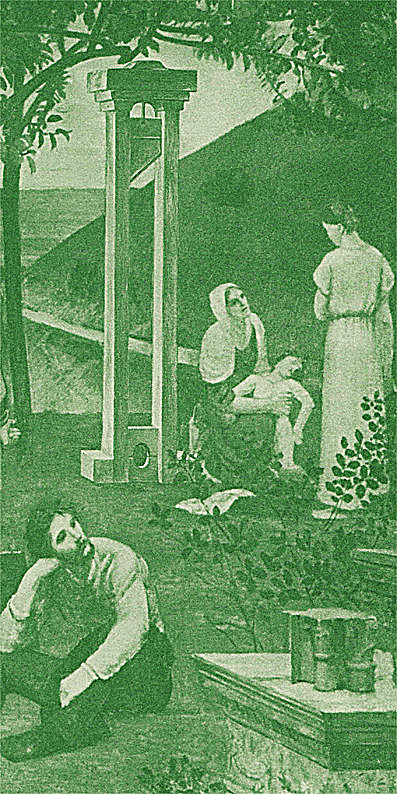Ian Hamilton Finlay
dal 15/11/2012 al 11/1/2013
Segnalato da
15/11/2012
Ian Hamilton Finlay
Galerie Judin, Berlin
Inter artes et naturam. The title of the exhibition refers to a well-known mural by Pierre Puvis de Chavannes dating from 1888-91. Finlay's artistic exploration of the interrelationship between nature and culture is a theme running throughout his work.

The title of the exhibition Inter artes et naturam refers to a well-known mural by Pierre Puvis de Chavannes dating from 1888-91. Finlay’s artistic exploration of the interrelationship between nature and culture is a theme running throughout his work. From the Pre-Socratics to Rousseau’s natural idealism, the French Revolution, and neoclassicism, his investigation extends to the Third Reich and to the present.
Ian Hamilton Finlay first became known in the 1960s as an author of concrete poetry. The typographical order of letters and words were just as important to the poet as the traditional elements of content, rhythm, and rhyme—which prefigured his development as a visual artist. In addition to experiments with the expressive possibilities of language, an interest in nature, the second major theme in Finlay’s work, emerged early on. In the late 1960s he began to dedicate himself to his central work, Little Sparta, a “poet’s garden” in the Pentland Hills outside of Edinburgh. This unusual Gesamtkunstwerk is a mixture of traditional English landscape architecture, avant-garde art and poetry (full of puns and irony), and an irreverence for the conventions of modernity. (Full press release)
At the center of this exhibition are a number of works painted directly on the wall. The large work SF (1978/2005) shows the mutation of two “s” letters over the course of eight steps—initially appearing in the old German script, in which they look like two “f” shapes, and finally taking the form of the well-known double thunderbolt of the SS emblem. The progression of the typeface is revealed here as the development, or decline, of the cultivation and enlightenment of the 18th century, when the old German script was in use, into the barbarization of the Third Reich. In 1941 Hitler passed a decree that banned the so-called Gothic scripts (for example the popular Sütterlin script). The exhibition Inter artes et naturam presents four wall paintings (carried out by sign painter Les Edge, one of Finlay’ longstanding collaborators), a sculpture, and nine prints.
[...] Ian Hamilton Finlay (1925 - 2006) was born in Nassau on the Bahama Islands. In 1985 he was nominated for the Turner Prize. He was invited to take part on documenta 8, 1987 in Kassel with an outside-installation. A comprehensive group of works by Finlay that have been included in this year’s Sao Paulo Biennale were met with great critical acclaim. The artist died in 2006 in Edinburgh, Scottland.
Until 17 Februar 2013, the Tate Britain will honor the artist, poet and thinker with an Artist Room showcasing 24 works by the artist of the Tate Collection.
Press office:
I David Ulrichs I david@david-ulrichs.com I +49 (0)176 5033 0135 I www.david-ulrichs.com I
Opening Friday, 16 November 6 - 9pm
Nolan Judin
Potsdamer Straße 83 (Hof) Berlin
Tue - Sat: 11am-6pm
Admission free



